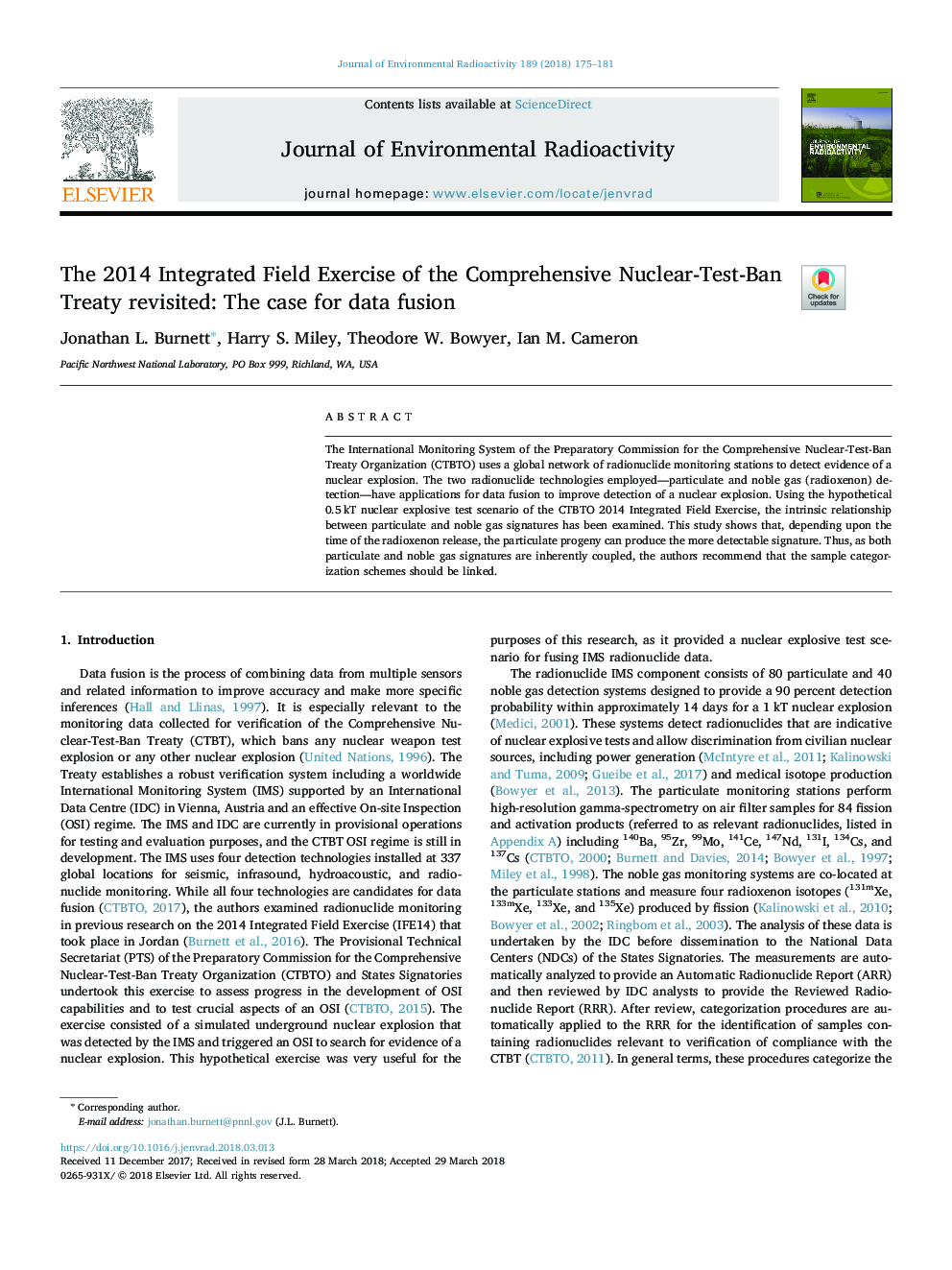| Article ID | Journal | Published Year | Pages | File Type |
|---|---|---|---|---|
| 8080533 | Journal of Environmental Radioactivity | 2018 | 7 Pages |
Abstract
The International Monitoring System of the Preparatory Commission for the Comprehensive Nuclear-Test-Ban Treaty Organization (CTBTO) uses a global network of radionuclide monitoring stations to detect evidence of a nuclear explosion. The two radionuclide technologies employed-particulate and noble gas (radioxenon) detection-have applications for data fusion to improve detection of a nuclear explosion. Using the hypothetical 0.5â¯kT nuclear explosive test scenario of the CTBTO 2014 Integrated Field Exercise, the intrinsic relationship between particulate and noble gas signatures has been examined. This study shows that, depending upon the time of the radioxenon release, the particulate progeny can produce the more detectable signature. Thus, as both particulate and noble gas signatures are inherently coupled, the authors recommend that the sample categorization schemes should be linked.
Related Topics
Physical Sciences and Engineering
Energy
Nuclear Energy and Engineering
Authors
Jonathan L. Burnett, Harry S. Miley, Theodore W. Bowyer, Ian M. Cameron,
